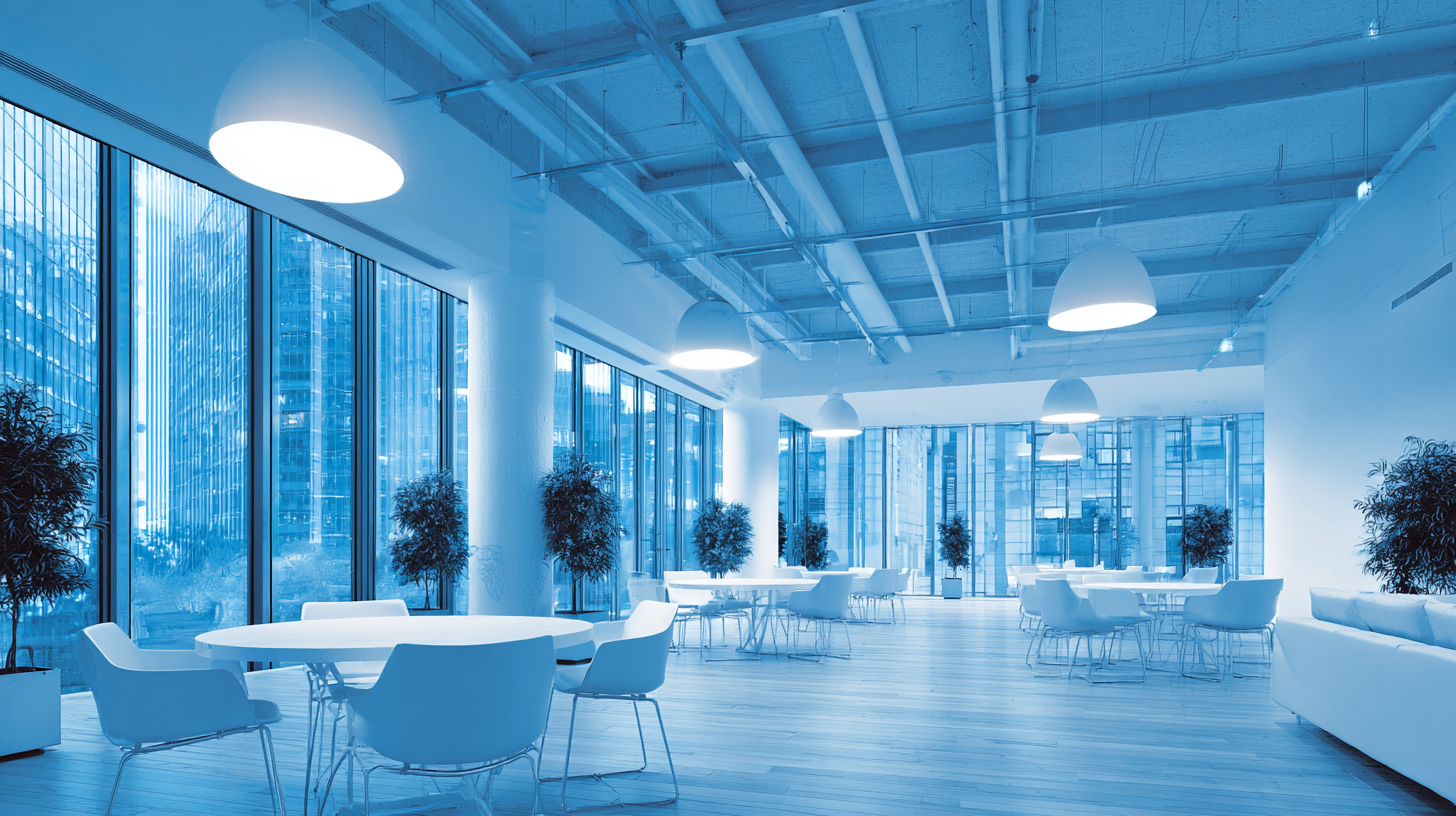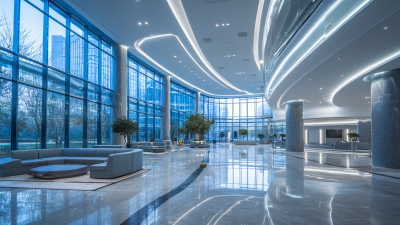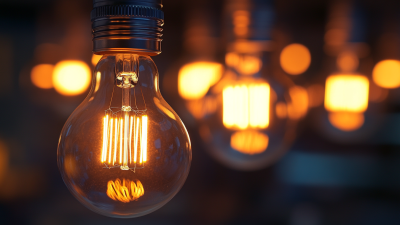Revolutionizing Energy Efficiency: The Future of LED Lighting in Smart Homes and Offices
As we move towards a more connected and sustainable future, LED lighting stands at the forefront of revolutionizing energy efficiency in smart homes and offices. According to the U.S. Department of Energy, LED lighting is now the fastest-growing segment of the lighting market, with the potential to reduce energy consumption for lighting by up to 75% by the year 2030. This shift not only enhances energy savings but also improves the quality of light while minimizing environmental impact.

Innovations in smart technology further integrate LED lighting into home and office automation systems, allowing for dynamic energy management and personalized user experiences. The convergence of LED lighting with smart technology is poised to redefine how we illuminate our spaces, making them more efficient and adaptable to our needs. As the demand for energy-efficient solutions continues to rise, understanding the role of LED lighting in shaping our built environments has never been more critical.
Understanding the Energy-Saving Potential of LED Lighting in Smart Environments
LED lighting is at the forefront of the energy efficiency revolution, particularly in smart homes and offices. According to a report by the U.S. Department of Energy, LED lighting can reduce energy consumption by up to 75% compared to traditional incandescent bulbs. This significant reduction not only leads to lower utility bills but also diminishes a building's carbon footprint, aligning perfectly with the global push for sustainability. In smart environments, where interconnected devices optimize energy usage, the full potential of LEDs can be harnessed, resulting in even greater energy savings.
To maximize the benefits of LED lighting in smart homes and offices, consider these tips:
- Invest in smart lighting controls that allow you to automate your lights based on occupancy and natural light levels. This can enhance savings by ensuring lights are only on when needed.
- Utilize dimmers and color temperature adjustments to create the perfect ambiance while conserving energy. Studies show that adjusting light levels can contribute to a dynamic energy-efficient environment.
By implementing these strategies, the move toward energy-efficient LED lighting not only transforms living and working spaces but also promotes a sustainable future.
Integrating Smart Controls: Maximizing LED Efficiency in Homes and Offices
The integration of smart controls in LED lighting systems is transforming how we optimize energy efficiency in homes and offices. Smart technologies, such as programmable lighting schedules and motion sensors, can significantly reduce energy consumption by ensuring that lights are only on when needed. For instance, integrating smart dimmers can adjust light intensity based on natural daylight, further enhancing energy savings.
Tips: To make the most of smart controls, consider investing in a lighting system that is compatible with voice-activated assistants. This allows you to effortlessly manage your lighting even when you're away from your devices. Additionally, utilizing smartphone apps to monitor your energy usage in real-time can provide valuable insights and encourage more efficient habits.
Another innovation is the use of occupancy sensors, which automatically turn lights on or off based on room occupancy. This not only minimizes waste but also creates a more personalized environment. By linking LED fixtures to smart home hubs, users can fine-tune their lighting preferences, enhancing both comfort and efficiency.
Tips: When configuring your smart lighting system, think about your daily routines and adjust lighting schedules accordingly. Implementing features like geofencing can further ensure lights are automatically turned off when you leave the house, preventing unnecessary energy consumption.
Analyzing the Impact of LED Technology on Long-Term Electricity Costs
The integration of LED technology in smart homes and offices is set to transform energy efficiency, significantly impacting long-term electricity costs. Unlike traditional lighting solutions, LEDs consume substantially less power while providing superior brightness and longevity. This reduced energy consumption directly translates into lower electricity bills, making LED lighting a sound financial investment for property owners.
Moreover, the smart capabilities of modern LED systems allow for enhanced control over energy usage. Homeowners and businesses can program lighting to operate only when necessary, further optimizing energy savings. Features such as motion sensors and automated dimming can adapt lighting levels based on occupancy and natural light availability. As more buildings adopt LED solutions with smart technology, the cumulative effect on electricity demand will not only lower individual costs but also contribute to wider sustainability goals by reducing overall energy consumption.
Evaluating the Role of IoT in Enhancing LED Lighting Performance
The integration of the Internet of Things (IoT) into LED lighting systems marks a significant advancement in energy efficiency within smart homes and offices. By equipping LED fixtures with IoT capabilities, these systems can communicate with each other and with users, enabling real-time monitoring and adjustments to lighting performance. This interaction allows for individualized lighting settings based on occupancy or time of day, further optimizing energy usage and enhancing user comfort.
Moreover, IoT-enabled LED lighting can collect and analyze data to predict usage patterns. For instance, smart sensors can determine when rooms are unoccupied and automatically dim or turn off lights, reducing unnecessary energy consumption. Such intelligence not only conserves energy but also extends the lifespan of lighting fixtures, contributing to cost savings for both residential and commercial spaces. As smart technology continues to evolve, the role of IoT in maximizing the benefits of LED lighting will play a critical part in creating sustainable environments.

Future Trends: Innovations in LED Lighting for Sustainable Living and Workspaces
As energy efficiency becomes a paramount concern in modern living and working environments, the future of LED lighting is set to play a transformative role. According to a report by the International Energy Agency (IEA), LED technology has the potential to reduce global electricity consumption for lighting by up to 70% by 2030. This translates to significant energy savings that can help mitigate climate change while also lowering utility costs for both homeowners and businesses.
Innovations in LED lighting are not limited to energy savings; they are also catalyzing the development of smarter, more connected environments. Advanced features such as IoT integration and tunable white light are gaining traction. A recent study from market research firm MarketsandMarkets predicts that the smart lighting market, which includes LED technologies, is expected to grow from $24.4 billion in 2020 to $75.0 billion by 2025, at a CAGR of 25.3%. This growth highlights the increasing importance of intelligent lighting solutions in promoting sustainable living and enhancing productivity in office spaces. With the integration of smart systems, LED lighting can now adapt to user preferences and occupancy, further optimizing energy consumption and creating harmonious environments.

Related Posts
-

How to Choose the Best Commercial LED Solutions for Maximum Energy Efficiency and Cost Savings
-

30 Proven Benefits of Commercial Led Technology for Sustainable Business Growth
-

Navigating Global Standards for Importing Commercial Led Fixtures
-

Navigating Tariff Challenges: China’s Resilient Growth in Best Led Fixtures Amidst US-China Trade Tensions
-

Discover China's Smart Manufacturing Driving Global Demand for Quality Best Commercial LED Solutions
-

Navigating Import Export Certifications for the Best Commercial Led Fixtures
